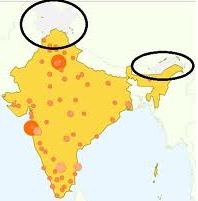Universal Service Obligation Fund of India | Functions of Universal Service Obligation
Continue reading..
Indian Current Affairs | Current Affairs India - December 2011
Continue reading..
Foreign Direct investment in India | FDI - Procedure | Prohibited Sectors
Continue reading..
Market Borrowing Programme of India | Reasons and Impact
Continue reading..
NCERT Notes for Class 8 | Agriculture
Continue reading..
Indian Current Affairs | Current Affairs India - December 2011
Continue reading..
Food Security Bill | Why food security bill is important to India - Article by M S Swaminathan
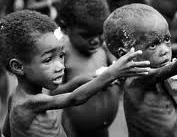 What Mahatma Gandhi said of the role of food in a human being's life in a 1946 speech at Noakhali, now in Bangladesh, remains the most powerful expression of the importance of making access to food a basic human right. Gandhiji also wanted that the pathway to ending hunger should involve opportunities for everyone to earn their daily bread, since the process of ending hunger should not lead to the erosion of human dignity. Unfortunately, this message was forgotten after Independence, and government departments started referring to those being provided any form of social support as “beneficiaries.”
What Mahatma Gandhi said of the role of food in a human being's life in a 1946 speech at Noakhali, now in Bangladesh, remains the most powerful expression of the importance of making access to food a basic human right. Gandhiji also wanted that the pathway to ending hunger should involve opportunities for everyone to earn their daily bread, since the process of ending hunger should not lead to the erosion of human dignity. Unfortunately, this message was forgotten after Independence, and government departments started referring to those being provided any form of social support as “beneficiaries.”
Continue reading..
Endosulfan in India | Endosulfan Ban in India
Continue reading..
Indian Current Affairs | Current Affairs India - December 2011
Continue reading..
General Studies Online Notes | Negative list and Positive list approach in trade
Continue reading..
Frontline Magazine November 2011 | General Studies Online Notes
Continue reading..
Indian Current Affairs | Current Affairs India - November 2011
Continue reading..
General Studies Online | Corporate Social Responsibility in India
Continue reading..
Science and Technology | Science and Technology News - November 2011
Continue reading..
UNESCO-Madanjeet Singh Prize for the Promotion of Tolerance and Non-Violence
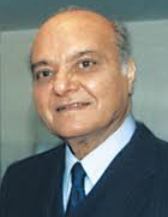 The UNESCO-Madanjeet Singh Prize for the Promotion of Tolerance and Non-Violence is dedicated to advancing the spirit of tolerance in the arts, education, culture, science and communication. It is awarded every two years to individuals or institutions for outstanding contributions to the promotion of tolerance and non-violence. The Prize was created in 1995 on the occasion of the 125th anniversary of the birth of the Mahatma Gandhi, thanks to the generosity of the Indian writer and diplomat Madanjeet Singh. Madanjeet Singh is an Indian artist, writer, former diplomat and philanthropist. Since 2000 he has been a UNESCO Goodwill Ambassador. He created the South Asia Foundation in 2000 as a regional youth movement and it has now grown to have chapters in eight countries. The South Asia Foundation (SAF) has offered scholarships to South Asian students under various disciplines in its 12 UNESCO Madanjeet Singh Institutions of Excellence.
The UNESCO-Madanjeet Singh Prize for the Promotion of Tolerance and Non-Violence is dedicated to advancing the spirit of tolerance in the arts, education, culture, science and communication. It is awarded every two years to individuals or institutions for outstanding contributions to the promotion of tolerance and non-violence. The Prize was created in 1995 on the occasion of the 125th anniversary of the birth of the Mahatma Gandhi, thanks to the generosity of the Indian writer and diplomat Madanjeet Singh. Madanjeet Singh is an Indian artist, writer, former diplomat and philanthropist. Since 2000 he has been a UNESCO Goodwill Ambassador. He created the South Asia Foundation in 2000 as a regional youth movement and it has now grown to have chapters in eight countries. The South Asia Foundation (SAF) has offered scholarships to South Asian students under various disciplines in its 12 UNESCO Madanjeet Singh Institutions of Excellence.
Continue reading..
International Current Affairs | International Current Events November 2011
Continue reading..
Carbon Disclosure Project | Carbon Disclosure Project in India
 The Carbon Disclosure Project (CDP) is a UK based organisation which works with shareholders and corporations to disclose the GHG emissions of major corporations. Over 3,000 organisations from more than 60 countries round the world now measure and disclose their greenhouse gas emissions, water management and climate change strategies through CDP to set reduction targets and make performance improvements. This data is made available for use by a wide audience including institutional investors, corporations, policymakers and their advisors, public sector organisations, government bodies, academics and the public. The Carbon Disclosure Leadership Index (CDLI), an initiative by CDP, recognises organisations meeting outstanding standards of transparency and comprehensiveness of GHG reporting and analysis. The disclosure is a measure of the companies’ understanding of the risks, effects on climate change and ability to capture good quality of data.
The Carbon Disclosure Project (CDP) is a UK based organisation which works with shareholders and corporations to disclose the GHG emissions of major corporations. Over 3,000 organisations from more than 60 countries round the world now measure and disclose their greenhouse gas emissions, water management and climate change strategies through CDP to set reduction targets and make performance improvements. This data is made available for use by a wide audience including institutional investors, corporations, policymakers and their advisors, public sector organisations, government bodies, academics and the public. The Carbon Disclosure Leadership Index (CDLI), an initiative by CDP, recognises organisations meeting outstanding standards of transparency and comprehensiveness of GHG reporting and analysis. The disclosure is a measure of the companies’ understanding of the risks, effects on climate change and ability to capture good quality of data.
Continue reading..
India After Independence
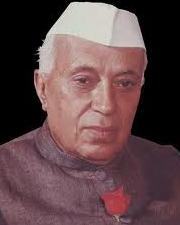 When India became independent in August 1947, it faced a series of very great challenges. As a result of Partition, 8 million refugees had come into the country from what was now Pakistan. These people had to be found homes and jobs. Then there was the problem of the princely states, almost 500 of them, each ruled by a maharaja or a nawab, each of whom had to be persuaded to join the new nation. The problems of the refugees and of the princely states had to be addressed immediately. In the longer term, the new nation had to adopt a political system that would best serve the hopes and expectations of its population.
When India became independent in August 1947, it faced a series of very great challenges. As a result of Partition, 8 million refugees had come into the country from what was now Pakistan. These people had to be found homes and jobs. Then there was the problem of the princely states, almost 500 of them, each ruled by a maharaja or a nawab, each of whom had to be persuaded to join the new nation. The problems of the refugees and of the princely states had to be addressed immediately. In the longer term, the new nation had to adopt a political system that would best serve the hopes and expectations of its population.
Continue reading..
Environmental Sustainability : Climate Summit for a Living Himalayas
Continue reading..
Indian Freedom Fighters : Surendranath Banerjee
 Sir Surendranath Banerjee (1848–1925) was one of the earliest Indian political leaders from Calcutta. He founded the Indian National Association and later became a senior leader of the Indian National Congress. He was also known as Rashtraguru. After graduating from the University of Calcutta, he traveled to England in 1868, along with Romesh Chunder Dutt and Behari Lal Gupta to compete in the Indian Civil Service examinations. He cleared the competitive examination in 1869, but was barred owing to a dispute over his exact age. After clearing the matter in the courts, Banerjee cleared the exam again in 1871 and was posted as assistant magistrate in Sylhet. However, Banerjee was dismissed soon from his job owing to racial discrimination. Banerjee went to England to protest this decision, but was unsuccessful. After returing to India, he founded the Indian National Association with Anandamohan Bose, one of the earliest Indian political organization of its kind, in 1876. He used the organization to tackle the issue of age-limit for Indian students appearing for ICS examinations. He condemned the racial discrimination perpetrated by British officials in India through speeches all over the country, which made him very popular.
Sir Surendranath Banerjee (1848–1925) was one of the earliest Indian political leaders from Calcutta. He founded the Indian National Association and later became a senior leader of the Indian National Congress. He was also known as Rashtraguru. After graduating from the University of Calcutta, he traveled to England in 1868, along with Romesh Chunder Dutt and Behari Lal Gupta to compete in the Indian Civil Service examinations. He cleared the competitive examination in 1869, but was barred owing to a dispute over his exact age. After clearing the matter in the courts, Banerjee cleared the exam again in 1871 and was posted as assistant magistrate in Sylhet. However, Banerjee was dismissed soon from his job owing to racial discrimination. Banerjee went to England to protest this decision, but was unsuccessful. After returing to India, he founded the Indian National Association with Anandamohan Bose, one of the earliest Indian political organization of its kind, in 1876. He used the organization to tackle the issue of age-limit for Indian students appearing for ICS examinations. He condemned the racial discrimination perpetrated by British officials in India through speeches all over the country, which made him very popular.
Continue reading..
Indian Freedom Fighters : W C Banerjee
International Current Affairs : Indian Map Controversy
Continue reading..
Indian Freedom Fighters : Pherozeshah Mehta
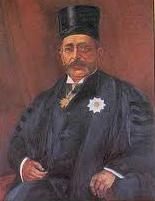
Indian Freedom Fighters : Badruddin Tyabji
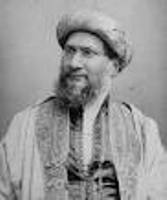 Badruddin Tyabji (1844-1906) was the third President of the Indian National Congress. He was the first Muslim to become the President of Indian National Congress. He passed the London Matriculation and became the first Indian Barrister in Bombay in 1867. He accepted a Judgeship of the Bombay High Court in 1895. In 1902, he became the first Indian to hold the post of Chief Justice in Bombay. He was known as a great Judge and for his courage and impartiality, typically shown by his granting bail to Tilak in a sensational case after it had been rejected thrice by others. Tilak had been charged with sedition by the government for what it saw as provocative articles in his paper, Kesari.
Badruddin Tyabji (1844-1906) was the third President of the Indian National Congress. He was the first Muslim to become the President of Indian National Congress. He passed the London Matriculation and became the first Indian Barrister in Bombay in 1867. He accepted a Judgeship of the Bombay High Court in 1895. In 1902, he became the first Indian to hold the post of Chief Justice in Bombay. He was known as a great Judge and for his courage and impartiality, typically shown by his granting bail to Tilak in a sensational case after it had been rejected thrice by others. Tilak had been charged with sedition by the government for what it saw as provocative articles in his paper, Kesari.
Continue reading..
Indian Freedom Fighters : Dadabhai Naoroji
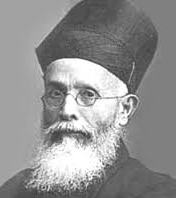 Dadabhai Naoroji (1825–1917) known as the Grand Old Man of India, was a Parsi intellectual, educator, cotton trader, and an early Indian political leader. His book Poverty and Un-British Rule in India brought attention to the draining of India's wealth into Britain. He was a Member of Parliament (MP) in the British House of Commons between 1892 and 1895, and the first Asian to be a British MP. He is also credited with the founding of the Indian National Congress, along with A.O. Hume and Dinshaw Edulji Wacha. In 1867 Naoroji helped establish the East India Association, one of the predecessor organizations of the Indian National Congress with the aim of putting across the Indian point of view before the British public. This Association soon won the support of eminent Englishmen and was able to exercise considerable influence in the British Parliament.
Dadabhai Naoroji (1825–1917) known as the Grand Old Man of India, was a Parsi intellectual, educator, cotton trader, and an early Indian political leader. His book Poverty and Un-British Rule in India brought attention to the draining of India's wealth into Britain. He was a Member of Parliament (MP) in the British House of Commons between 1892 and 1895, and the first Asian to be a British MP. He is also credited with the founding of the Indian National Congress, along with A.O. Hume and Dinshaw Edulji Wacha. In 1867 Naoroji helped establish the East India Association, one of the predecessor organizations of the Indian National Congress with the aim of putting across the Indian point of view before the British public. This Association soon won the support of eminent Englishmen and was able to exercise considerable influence in the British Parliament.
Continue reading..
NCERT Standard 8 : Indian Freedom Struggle: 1870s-1947
Continue reading..
Awadh in Revolt of 1857 | Summary Settlement of 1856
Continue reading..
Deccan Riots of 1875 | Deccan Riots Commission
Continue reading..
Permanent Settlement by Charles Cornwallis
Continue reading..
Current Affairs India November 2011 | Access to Justice for Marginalized People
Continue reading..
Social Reforms of India - Short Notes
Continue reading..
East India Company and Revolt of 1857
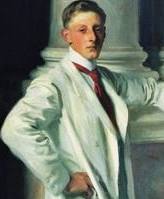 The policies of the East India Company had adverse effect on all sections of Indian people. Since the mid-eighteenth century, nawabs and rajas had seen their power erode. They had gradually lost their authority and honour. The freedom of the rulers reduced, their armed forces disbanded, and their revenues and territories taken away by stages. Many ruling families tried to negotiate with the Company to protect their interests. For example, Rani Lakshmibai of Jhansi wanted the Company to recognise her adopted son as the heir to the kingdom after the death of her husband. Nana Saheb, the adopted son of Peshwa Baji Rao II, pleaded that he be given his father’s pension when the latter died. However, the Company, confident of its superiority and military powers, turned down these pleas. Awadh was one of the last territories to be annexed. In 1801, a subsidiary alliance was imposed on Awadh, and in 1856 it was taken over. Governor-General Dalhousie declared that the territory was being misgoverned and British rule was needed to ensure proper administration.
The policies of the East India Company had adverse effect on all sections of Indian people. Since the mid-eighteenth century, nawabs and rajas had seen their power erode. They had gradually lost their authority and honour. The freedom of the rulers reduced, their armed forces disbanded, and their revenues and territories taken away by stages. Many ruling families tried to negotiate with the Company to protect their interests. For example, Rani Lakshmibai of Jhansi wanted the Company to recognise her adopted son as the heir to the kingdom after the death of her husband. Nana Saheb, the adopted son of Peshwa Baji Rao II, pleaded that he be given his father’s pension when the latter died. However, the Company, confident of its superiority and military powers, turned down these pleas. Awadh was one of the last territories to be annexed. In 1801, a subsidiary alliance was imposed on Awadh, and in 1856 it was taken over. Governor-General Dalhousie declared that the territory was being misgoverned and British rule was needed to ensure proper administration.
Continue reading..
Industries- Different Types Based on Size,Ownership and Technology
Continue reading..
British East India Company Rule in India | Revenue Generation Methods
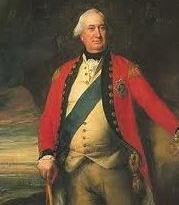 The Company had become the Diwan of Bengal in 1765, but it still saw itself primarily as a trader. It wanted a large revenue income but was unwilling to set up any regular system of assessment and collection. The effort was to increase the revenue as much as it could and buy fine cotton and silk cloth as cheaply as possible. Within five years the value of goods bought by the Company in Bengal doubled. Before 1865, the Company had purchased goods in India by importing gold and silver from Britain. Now the revenue collected in Bengal could finance the purchase of goods for export. Soon it was clear that the Bengal economy was facing a deep crisis. Artisans were deserting villages since they were being forced to sell their goods to the Company at low prices. Peasants were unable to pay the dues that were being demanded from them. Artisanal production was in decline, and agricultural cultivation showed signs of collapse. Then in 1770 a terrible famine killed ten million people in Bengal. About one-third of the population was wiped out.
The Company had become the Diwan of Bengal in 1765, but it still saw itself primarily as a trader. It wanted a large revenue income but was unwilling to set up any regular system of assessment and collection. The effort was to increase the revenue as much as it could and buy fine cotton and silk cloth as cheaply as possible. Within five years the value of goods bought by the Company in Bengal doubled. Before 1865, the Company had purchased goods in India by importing gold and silver from Britain. Now the revenue collected in Bengal could finance the purchase of goods for export. Soon it was clear that the Bengal economy was facing a deep crisis. Artisans were deserting villages since they were being forced to sell their goods to the Company at low prices. Peasants were unable to pay the dues that were being demanded from them. Artisanal production was in decline, and agricultural cultivation showed signs of collapse. Then in 1770 a terrible famine killed ten million people in Bengal. About one-third of the population was wiped out.
Continue reading..
British East India Company Rule in India
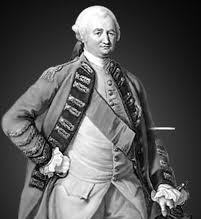 In 1600, the East India Company acquired a charter from Queen Elizabeth I, granting it the sole right to trade with the East. The royal charter, however, could not prevent other European powers from entering the Eastern markets. By the time the first English ships sailed down the west coast of Africa, round the Cape of Good Hope, and crossed the Indian Ocean, the Portuguese had already established their presence in the western coast of India, and had their base in Goa. In fact, it was Vasco da Gama, a Portuguese explorer, who had discovered this sea route to India in 1498. By the early seventeenth century, the Dutch too were exploring the possibilities of trade in the Indian Ocean. Soon the French traders arrived on the scene. The problem was that all the companies were interested in buying the same things. The fine qualities of cotton and silk produced in India had a big market in Europe. Pepper, cloves, cardamom and cinnamon too were in great demand. Competition amongst the European companies inevitably pushed up the prices at which these goods could be purchased, and this reduced the profits that could be earned. The only way the trading companies could flourish was by eliminating rival competitors. The urge to secure markets therefore led to fierce battles between the trading companies.
In 1600, the East India Company acquired a charter from Queen Elizabeth I, granting it the sole right to trade with the East. The royal charter, however, could not prevent other European powers from entering the Eastern markets. By the time the first English ships sailed down the west coast of Africa, round the Cape of Good Hope, and crossed the Indian Ocean, the Portuguese had already established their presence in the western coast of India, and had their base in Goa. In fact, it was Vasco da Gama, a Portuguese explorer, who had discovered this sea route to India in 1498. By the early seventeenth century, the Dutch too were exploring the possibilities of trade in the Indian Ocean. Soon the French traders arrived on the scene. The problem was that all the companies were interested in buying the same things. The fine qualities of cotton and silk produced in India had a big market in Europe. Pepper, cloves, cardamom and cinnamon too were in great demand. Competition amongst the European companies inevitably pushed up the prices at which these goods could be purchased, and this reduced the profits that could be earned. The only way the trading companies could flourish was by eliminating rival competitors. The urge to secure markets therefore led to fierce battles between the trading companies.
Continue reading..
Robert Clive in Indian History
 Robert Clive (1725-1774), was one of the creators of British power in India. In his first governorship (1755–60) he won the Battle of Plassey and became master of Bengal. In his second governorship (1764–67) he reorganized the British colony.
Robert Clive (1725-1774), was one of the creators of British power in India. In his first governorship (1755–60) he won the Battle of Plassey and became master of Bengal. In his second governorship (1764–67) he reorganized the British colony.
Continue reading..
Current Affairs November 2011 | Shiksha Ka Haq campaign launched
Continue reading..
Occupy Wall Street and Occupy Resistance
Continue reading..
Current Affairs India November 2011 | Indian Current Affairs Short Notes
Continue reading..
Carnatic Wars | First Carnatic War | Second Carnatic War | Third Carnatic War
Continue reading..
Human Resource Basics | Population Pyramid of India - 2010
Continue reading..
Basics of Indian Constitution | Introduction to Constitution of India
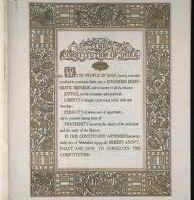 In 1934, the Indian National Congress made the demand for a Constituent Assembly. During the Second World War, this assertion for an independent Constituent Assembly formed only of Indians gained momentum and this was convened in December 1946. Between December 1946 and November 1949, the Constituent Assembly drafted a constitution for independent India. Free to shape their destiny at last, after 150 years of British rule, the members of the Constituent Assembly approached this task with the great idealism that the freedom struggle had helped produce. The result was the longest written constitution of any sovereign country in the world, which is safeguarding the democratic nature of our country for the last 65 years.
In 1934, the Indian National Congress made the demand for a Constituent Assembly. During the Second World War, this assertion for an independent Constituent Assembly formed only of Indians gained momentum and this was convened in December 1946. Between December 1946 and November 1949, the Constituent Assembly drafted a constitution for independent India. Free to shape their destiny at last, after 150 years of British rule, the members of the Constituent Assembly approached this task with the great idealism that the freedom struggle had helped produce. The result was the longest written constitution of any sovereign country in the world, which is safeguarding the democratic nature of our country for the last 65 years.
Continue reading..
NCERT Notes for Class 8 | NCERT Quiz | NCERT Standard 8 - Social Science
Continue reading..
NCERT Notes for Class 8 | NCERT Quiz | NCERT Standard 8 - Science
Continue reading..
NCERT Notes for Class 8 | NCERT Quiz | NCERT Standard 8 - Science
Continue reading..
NCERT Notes for Class 8 | NCERT Quiz | NCERT Standard 8 - Science
Continue reading..
NCERT Notes for Class 8 | NCERT Quiz | NCERT Standard 8 - Science
Continue reading..
Science and Technology News | October 2011
Continue reading..
Frontline Magazine October 2011 | Online Notes
Continue reading..
Frontline Magazine October 2011 | Online Notes
Continue reading..
Current Affairs India November 2011 | Indian Current Affairs Short Notes
Continue reading..
Jawaharlal Nehru as Prime Minister of India
 Jawaharlal Nehru was the first and longest-serving Prime Minister of India (1947–1964). Nehru contributed to the establishment of a secular Parliamentary democracy in India and was one of the founders of the international Non-Aligned Movement. Nehru advocated Fabian Socialism (Socialism through gradualism, not through revolution) and a strong Public sector as the means by which economic development could be pursued by poorer nations. He created the Planning commission of India and started the Five-Year Plans in 1951. Nehru envisaged a mixed economy in which the government would manage strategic industries such as mining, electricity and heavy industries, serving public interest and a check to private enterprise. Nehru pursued land redistribution and launched programmes to build irrigation canals, dams and spread the use of fertilizers to increase agricultural production. Nehru envisioned the developing of nuclear weapons and established the Atomic Energy Commission of India (AEC) in 1948. Homi J. Bhabha was entrusted with complete authority over all nuclear related affairs and programs and answered only to Nehru himself.
Jawaharlal Nehru was the first and longest-serving Prime Minister of India (1947–1964). Nehru contributed to the establishment of a secular Parliamentary democracy in India and was one of the founders of the international Non-Aligned Movement. Nehru advocated Fabian Socialism (Socialism through gradualism, not through revolution) and a strong Public sector as the means by which economic development could be pursued by poorer nations. He created the Planning commission of India and started the Five-Year Plans in 1951. Nehru envisaged a mixed economy in which the government would manage strategic industries such as mining, electricity and heavy industries, serving public interest and a check to private enterprise. Nehru pursued land redistribution and launched programmes to build irrigation canals, dams and spread the use of fertilizers to increase agricultural production. Nehru envisioned the developing of nuclear weapons and established the Atomic Energy Commission of India (AEC) in 1948. Homi J. Bhabha was entrusted with complete authority over all nuclear related affairs and programs and answered only to Nehru himself.
Continue reading..
Jawaharlal Nehru as Freedom Fighter | Indian Freedom Fighters
 Pandit Jawaharlal Nehru (1889 - 1964) was one of the prominent leaders of Indian freedom struggle. He was the favourite disciple of Gandhiji and later became the first Prime Minister of India. Nehru is widely recognized as the architect of modern India. He had spent almost 14 years of his life in prison during India’s freedom struggle. After his studies in England, Jawaharlal Nehru returned to India in 1912 as a barrister. He married Kamala Nehru in 1916. In 1917, he joined Home Rule League. His became active in politics after meeting Mahatma Gandhi in 1919. At that time Gandhi had launched a campaign against Rowlatt Act. Nehru was instantly attracted to Gandhi's commitment for active but peaceful, non-co-operation movement (1920-1922). He actively participated in the movement and was arrested twice in connection with the Non-Cooperation Movement of 1920-22.
He organised the first Kisan March in Pratapgarh District of Uttar Pradesh in 1920.
Pandit Jawaharlal Nehru (1889 - 1964) was one of the prominent leaders of Indian freedom struggle. He was the favourite disciple of Gandhiji and later became the first Prime Minister of India. Nehru is widely recognized as the architect of modern India. He had spent almost 14 years of his life in prison during India’s freedom struggle. After his studies in England, Jawaharlal Nehru returned to India in 1912 as a barrister. He married Kamala Nehru in 1916. In 1917, he joined Home Rule League. His became active in politics after meeting Mahatma Gandhi in 1919. At that time Gandhi had launched a campaign against Rowlatt Act. Nehru was instantly attracted to Gandhi's commitment for active but peaceful, non-co-operation movement (1920-1922). He actively participated in the movement and was arrested twice in connection with the Non-Cooperation Movement of 1920-22.
He organised the first Kisan March in Pratapgarh District of Uttar Pradesh in 1920.
Continue reading..
UNFCCC and Kyoto Protocol Explained
 The United Nations Framework Convention on Climate Change (UNFCCC or FCCC) is an international environmental treaty came into effect at the UN Conference on Environment and Development (UNCED). The convention is informally known as the Earth Summit and was held in Rio de Janeiro in 1992. The aim of the treaty is to stabilize greenhouse gas concentrations in the atmosphere at a level that would prevent dangerous anthropogenic interference with the climate system. The treaty itself set no mandatory limits on greenhouse gas emissions for individual countries and contains no enforcement mechanisms. So the treaty is considered as legally non-binding. But the treaty provides for updates (called "protocols") that would set mandatory emission limits. The first and principal update is the Kyoto Protocol. The Protocol was initially adopted in 1997 in Kyoto, Japan, and entered into force in 2005. As of September 2011, 191 states have signed and ratified the protocol. A notable exception is United States, which had signed, but not ready to ratify it.
The United Nations Framework Convention on Climate Change (UNFCCC or FCCC) is an international environmental treaty came into effect at the UN Conference on Environment and Development (UNCED). The convention is informally known as the Earth Summit and was held in Rio de Janeiro in 1992. The aim of the treaty is to stabilize greenhouse gas concentrations in the atmosphere at a level that would prevent dangerous anthropogenic interference with the climate system. The treaty itself set no mandatory limits on greenhouse gas emissions for individual countries and contains no enforcement mechanisms. So the treaty is considered as legally non-binding. But the treaty provides for updates (called "protocols") that would set mandatory emission limits. The first and principal update is the Kyoto Protocol. The Protocol was initially adopted in 1997 in Kyoto, Japan, and entered into force in 2005. As of September 2011, 191 states have signed and ratified the protocol. A notable exception is United States, which had signed, but not ready to ratify it.
Continue reading..
Current Affairs India October 2011 | Indian Current Affairs Short Notes
Continue reading..
Faster, Sustainable and More Inclusive Growth | India's Twelfth Year Plan
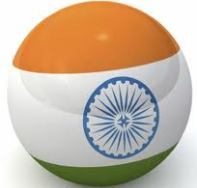 In the last decade, the Indian economy moved to a higher growth path. Between 2005 and 2008, the economy grew at around 9.5 per cent per annum. This made India one of the fastest growing nations in the world. The global financial crisis brought the growth down to 6.8 per cent in 2008-09, though even then India remained a growth leader in the world. This was followed by a strong recovery and the Indian economy grew by 8 and 8.5 per cent in the subsequent two years. Data for the first quarter of 2011-12 indicate a growth rate of 7.7 per cent. While there may be some moderation in growth in the current fiscal, the fundamentals of the economy are intact and the medium-term growth prospects remain buoyant. But the renewed uncertainty in the global economy, due to sluggish US growth and worsening of the Euro-zone sovereign debt crisis and weak business sentiments and persisting high inflation at home, poses considerable challenges to our economic growth.
In the last decade, the Indian economy moved to a higher growth path. Between 2005 and 2008, the economy grew at around 9.5 per cent per annum. This made India one of the fastest growing nations in the world. The global financial crisis brought the growth down to 6.8 per cent in 2008-09, though even then India remained a growth leader in the world. This was followed by a strong recovery and the Indian economy grew by 8 and 8.5 per cent in the subsequent two years. Data for the first quarter of 2011-12 indicate a growth rate of 7.7 per cent. While there may be some moderation in growth in the current fiscal, the fundamentals of the economy are intact and the medium-term growth prospects remain buoyant. But the renewed uncertainty in the global economy, due to sluggish US growth and worsening of the Euro-zone sovereign debt crisis and weak business sentiments and persisting high inflation at home, poses considerable challenges to our economic growth.
Continue reading..
Indian Independence Struggle | Revolutionary movement
Continue reading..
Urban Heat Island | Causes and Effects of Urban Heat Island
 An urban heat island (UHI) is a urban area which is significantly warmer than its surrounding rural areas. The temperature difference usually is larger at night than during the day, and is most apparent when winds are weak. Seasonally, UHI is seen during both summer and winter. By virtue of their high heat capacities, urban surfaces act as a giant reservoir of heat energy. For example, concrete can hold roughly 2,000 times as much heat as an equivalent volume of air. Latest studies shows that UHI is one among the main reasons for Global warming. The rising columns of warm air in urban areas are commonly called as "urban thermal plume". The temperature difference between urban areas and the surrounding rural areas can be as much as 5 degrees Celsius
An urban heat island (UHI) is a urban area which is significantly warmer than its surrounding rural areas. The temperature difference usually is larger at night than during the day, and is most apparent when winds are weak. Seasonally, UHI is seen during both summer and winter. By virtue of their high heat capacities, urban surfaces act as a giant reservoir of heat energy. For example, concrete can hold roughly 2,000 times as much heat as an equivalent volume of air. Latest studies shows that UHI is one among the main reasons for Global warming. The rising columns of warm air in urban areas are commonly called as "urban thermal plume". The temperature difference between urban areas and the surrounding rural areas can be as much as 5 degrees Celsius
Continue reading..
Vinayak Damodar Savarkar | Indian Freedom Fighters
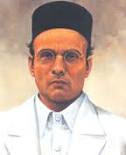 Vinayak Damodar Savarkar (1883–1966) was an Indian freedom fighter, revolutionary and politician. Savarkar created the term Hindutva, and emphasized its distinctiveness from Hinduism. Savarkar's revolutionary activities began when studying in India and England, where he was associated with the India House and founded student societies including Abhinav Bharat Society and the Free India Society, as well as publications supporting the cause of complete Indian independence by revolutionary means. Savarkar published The History of the War of Indian Independence about the Indian rebellion of 1857 that was banned by British authorities. He was arrested in 1910 for his connections with the revolutionary group India House. Following a failed attempt to escape while being transported from Marseilles, Savarkar was sentenced to two life terms amounting to 50 years' imprisonment and moved to the Cellular Jail in the Andaman and Nicobar Islands.
Vinayak Damodar Savarkar (1883–1966) was an Indian freedom fighter, revolutionary and politician. Savarkar created the term Hindutva, and emphasized its distinctiveness from Hinduism. Savarkar's revolutionary activities began when studying in India and England, where he was associated with the India House and founded student societies including Abhinav Bharat Society and the Free India Society, as well as publications supporting the cause of complete Indian independence by revolutionary means. Savarkar published The History of the War of Indian Independence about the Indian rebellion of 1857 that was banned by British authorities. He was arrested in 1910 for his connections with the revolutionary group India House. Following a failed attempt to escape while being transported from Marseilles, Savarkar was sentenced to two life terms amounting to 50 years' imprisonment and moved to the Cellular Jail in the Andaman and Nicobar Islands.
Continue reading..
Aurobindo Ghosh | Indian Freedom Fighters
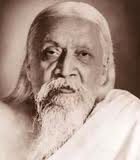 Aurobindo Ghosh (1872–1950) was an Indian nationalist, freedom fighter. He later turned into a world famous philosopher, yogi and guru. After education in England, he passed the famous ICS exam and joined the Baroda state service. When Bengal was partitioned, a nationalist campaign was carried out by groups of revolutionaries, led by Aurobindo Ghosh. He was one among the leads who established Jugantar, a main secret revolutionary group operated in Bengal. He was also the part of another revolutionary group, Anushilan Samiti. To take the extremists' view to the public, Bipin Chandra Pal had founded the nationalist Bengali newspaper Bande Mataram. Pal invited Aurobindo to become its editor along with Pal. Pal after a few issues discontinued contributing to the paper. The paper rapidly became a major success and the radical views finally found a popular voice. But as a result of its popularity and open espousal of aggressive methods, the paper came into frequent confrontation with the Raj.
Aurobindo Ghosh (1872–1950) was an Indian nationalist, freedom fighter. He later turned into a world famous philosopher, yogi and guru. After education in England, he passed the famous ICS exam and joined the Baroda state service. When Bengal was partitioned, a nationalist campaign was carried out by groups of revolutionaries, led by Aurobindo Ghosh. He was one among the leads who established Jugantar, a main secret revolutionary group operated in Bengal. He was also the part of another revolutionary group, Anushilan Samiti. To take the extremists' view to the public, Bipin Chandra Pal had founded the nationalist Bengali newspaper Bande Mataram. Pal invited Aurobindo to become its editor along with Pal. Pal after a few issues discontinued contributing to the paper. The paper rapidly became a major success and the radical views finally found a popular voice. But as a result of its popularity and open espousal of aggressive methods, the paper came into frequent confrontation with the Raj.
Continue reading..
Bipin Chandra Pal | Indian Freedom Fighters
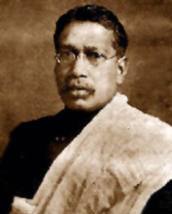 Bipin Chandra Pal (1858-1932) is known as the 'Father Of Revolutionary Thoughts' in India and was one of the freedom fighters of India. He was famous as one of the trio militant patriots of the Congress - the "Pal" of Lal Bal Pal. The trio was responsible for initiating the first popular upsurge against British colonial policy in the 1905 partition of Bengal, before the advent of Gandhi into Indian politics. Pal was also the founder and cheif editor of the journal Bande Mataram. In 1907, Pal was imprisoned for refusing to give evidence against Aurovinda Ghosh in the Bande Mataram Sedition Case. After release, he left for England, where he was briefly associated with the radical India House and founded the Swaraj journal. However, political repercussions in the wake of Curson Wyllie's assassination in 1909 by Madanlal Dhingra lead to the collapse of this publication, driving Pal to penury and mental collapse in London.
Bipin Chandra Pal (1858-1932) is known as the 'Father Of Revolutionary Thoughts' in India and was one of the freedom fighters of India. He was famous as one of the trio militant patriots of the Congress - the "Pal" of Lal Bal Pal. The trio was responsible for initiating the first popular upsurge against British colonial policy in the 1905 partition of Bengal, before the advent of Gandhi into Indian politics. Pal was also the founder and cheif editor of the journal Bande Mataram. In 1907, Pal was imprisoned for refusing to give evidence against Aurovinda Ghosh in the Bande Mataram Sedition Case. After release, he left for England, where he was briefly associated with the radical India House and founded the Swaraj journal. However, political repercussions in the wake of Curson Wyllie's assassination in 1909 by Madanlal Dhingra lead to the collapse of this publication, driving Pal to penury and mental collapse in London.
Continue reading..
Bal Gangadhar Tilak | Indian Freedom Fighters
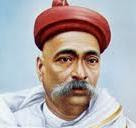 Bal Gangadhar Tilak (1856-1920, Maharashtra), was a social reformer and freedom fighter who was the first popular leader of the Indian Independence Movement. His famous quote, "Swaraj is my birthright, and I shall have it", created waves all across the country during the initial period of national wide freedom struggle movement. The British derogatorily called him as "Father of the Indian unrest". He was also conferred with the honorary title of Lokmanya, which literally means "Accepted by the people". He was one of the first and strongest advocates of "Swaraj" (self-rule). Tilak was considered the political and spiritual leader of Gandhi. When Tilak died in 1920, Gandhi paid his respects at his cremation in Bombay, along with 200,000 people. Gandhi called Tilak "The Maker of Modern India". Tilak is also today considered the father of Hindu Nationalism. He was the idol of Indian revolutionary Vinayak Damodar Savarkar, who penned the political doctrine of Hindutva.
Bal Gangadhar Tilak (1856-1920, Maharashtra), was a social reformer and freedom fighter who was the first popular leader of the Indian Independence Movement. His famous quote, "Swaraj is my birthright, and I shall have it", created waves all across the country during the initial period of national wide freedom struggle movement. The British derogatorily called him as "Father of the Indian unrest". He was also conferred with the honorary title of Lokmanya, which literally means "Accepted by the people". He was one of the first and strongest advocates of "Swaraj" (self-rule). Tilak was considered the political and spiritual leader of Gandhi. When Tilak died in 1920, Gandhi paid his respects at his cremation in Bombay, along with 200,000 people. Gandhi called Tilak "The Maker of Modern India". Tilak is also today considered the father of Hindu Nationalism. He was the idol of Indian revolutionary Vinayak Damodar Savarkar, who penned the political doctrine of Hindutva.
Continue reading..
Lala Lajpat Rai | Indian Freedom Fighters
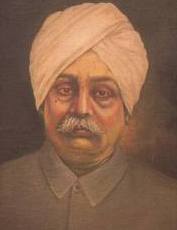 Lala Lajpat Rai (1865–1928) was an Indian author and freedom fighter. He was popularly known as Punjab Kesari (The Lion of Punjab). His death anniversary (November 17) is celebrated as martyr's day in India. He founded the National College, inside the Bradlaugh Hall in Lahore to impart quality education to the Indians, who did not want to join British institutions. Bhagat Singh was a graduate from the National College.
He was one of the three most prominent Hindu Nationalist members of the Indian National Congress.The other two members of the trio were Bal Gangadhar Tilak and Bipin Chandra Pal. They were known as Lal-Bal-Pal trio. They formed the extremist faction of the Indian National Congress, as opposed to the moderate one led first by Gopal Krishna Gokhale. Lalaji actively participated in the struggle against partition of Bengal. Along with Surendra Nath Banerjee, Bipin Chandra Pal and Aurorbindo Ghosh, he lead the Swadeshi movement which started in 1905. Lajpat Rai was arrested in 1907 for creating "turmoil" in Rawalpindi. He was put in Mandalay jail for six months.
Lala Lajpat Rai (1865–1928) was an Indian author and freedom fighter. He was popularly known as Punjab Kesari (The Lion of Punjab). His death anniversary (November 17) is celebrated as martyr's day in India. He founded the National College, inside the Bradlaugh Hall in Lahore to impart quality education to the Indians, who did not want to join British institutions. Bhagat Singh was a graduate from the National College.
He was one of the three most prominent Hindu Nationalist members of the Indian National Congress.The other two members of the trio were Bal Gangadhar Tilak and Bipin Chandra Pal. They were known as Lal-Bal-Pal trio. They formed the extremist faction of the Indian National Congress, as opposed to the moderate one led first by Gopal Krishna Gokhale. Lalaji actively participated in the struggle against partition of Bengal. Along with Surendra Nath Banerjee, Bipin Chandra Pal and Aurorbindo Ghosh, he lead the Swadeshi movement which started in 1905. Lajpat Rai was arrested in 1907 for creating "turmoil" in Rawalpindi. He was put in Mandalay jail for six months.
Continue reading..






